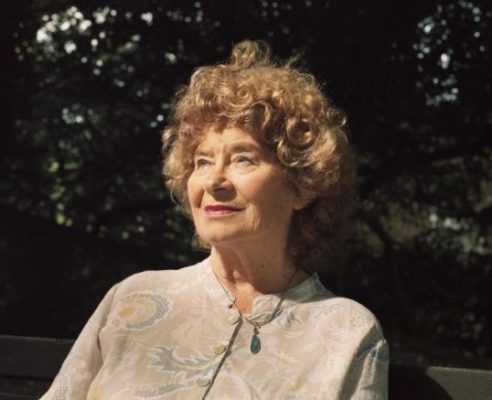
Despite her dedication to a pure and uncluttered reading of traditional song Shirley Collin’s Barbican show is a lavishly staged affair. A huge screen shows films and animations for each song. A narrator gives context and history to the music from a lectern. Two Morris Sides dance at various points throughout the concert.
It’s curious because since the revival of Shirley Collins’ career there is really only one subject that overshadows all others and that is her voice.
Shirley Collins’ recent interviews have seen her explaining her 35-year career hiatus with halting honesty and bluntness. The story of her inability to sing live is told with sharp narrative detail. She relates the grief of marital separation. She talks of seeing her husband’s lover wearing his jumpers. She describes the sensation of freezing on stage and being unable to sing anymore.
Shirley says she always wanted to sing but that she just couldn’t; she was prevented physically.
She deploys a similar honesty to her work and her duty to the song. Shirley doesn’t compose but collects and interprets traditional song and it is her intention to make that interpretation as transparent as possible. She is interested in making the most loyal readings of songs and fears that any emotive inflection would detract from their meaning and intention. It is in these ancient lyrics and melodies that we are to find the emotion and the singer should remain secondary.
This is what we hear on early albums like Death and the Lady and No Roses, a perfunctory and accurate vocal style designed to make us hear only the song. Shirley is a custodian, historian and messenger. Of course there is an implicit contradiction in this mission statement, as we can never truly forget the singer, just as the singer can never truly eschew emotion.
Shirley’s early performances are crystal clear but consequently any imperfection is amplified. A slight crack or variation in pitch highlights every murder, infidelity and devil in the words. The more Shirley tried to ignore vocal stylisation, the more closely we listened. Those records are indeed artefacts and gateways to centuries of folk song but they are also intensely emotional.
After the breakdown of her marriage Shirley stopped singing for decades but last year returned with a new album, Lodestar. Understandably her voice has changed out of all recognition. She sounds like what she is, an 80-year-old lady. Cracked and worn and with limited range her voice is a fragile, rusted instrument.
Shirley has talked about her caution in returning to singing with her changed voice. She said that the turning point was realising that she herself had learnt these songs from very old people with rich, worn voices. She came back to the idea that what was important was the song and little else, and she knew these songs better than anyone.
The contradiction of those early records is now even more pronounced and it is impossible to divorce these songs from the voice singing them. By any objective measurement Shirley’s voice is flawed in terms of range, pitch and amplitude and an interloper might be confused as to why such a large crowd might be listening to such an unorthodox talent.
But the audience is silent through out and every word is digested. Of course it’s impossible to truly separate singer from song just as it’s impossible for us to forget about Shirley’s own story. Everything is bound up together and it’s all embodied in that incredibly, singular voice. Shirley is a connection to a rich and ancient tradition. She has become the very thing that she once searched for and recorded in singers across the United Kingdom and America.
She is a treasure. She is a rich resource. She is utterly unique.
Words: Darren Hayman (@darrenhayman)
Photo: Eva Vermandel
